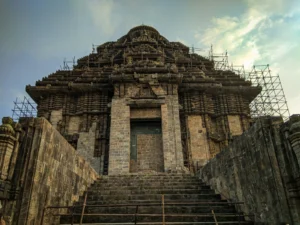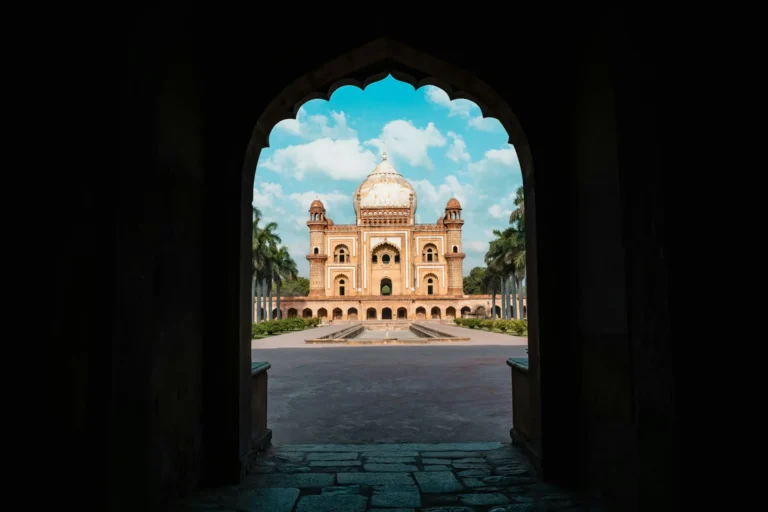There’s something humbling about standing in front of the Konark Sun Temple. Built in the 13th century and shaped like a colossal chariot, every inch of this UNESCO World Heritage site tells a story that was etched in stone, basked in sunlight, and framed by time. For photographers, it’s a playground of textures, light, myth, and shadows. But capturing its soul? That takes more than just a lens.
Whether you’re an amateur with a phone or a seasoned professional lugging a DSLR and tripod, this guide walks you through how to make the most of photography at Konark temple, from discovering the best photo angles to catching the soft blush of the golden hour at the Sun temple.

Table of Contents
Toggle1. Scout the Scene Before the Shot
Before pressing the shutter, take a walk around. Breathe it in. See the surroundings and what you want to capture. Often, we arrive with a picture already in mind. But Konark will challenge that. Morning light kisses one side; by evening, shadows stretch like dancers across its surface. Give yourself time to observe how the light shifts and dances across the temple’s stones throughout the day.
2. The Front View of the Chariot
The temple itself is designed as a chariot of the Sun God, Surya, with twelve pairs of stone-carved wheels pulled by seven horses. If you want that iconic postcard shot, the one that shows grandeur you can start with the frontal view.
Stand a few meters away and slightly off-center (to the left or right). This allows you to capture both the wheels and a portion of the horses, giving depth to the composition. During sunrise, when the first rays fall directly onto this façade, it’s a photographer’s dream. Golden hour at Sun temple here isn’t just golden; it’s magic. The carvings seem to glow from within.
3. The Wheels
Each wheel is a masterpiece. Intricate carvings of celestial beings, dancers, and daily life decorate the spokes. For detail shots, wait until mid-morning when the sun is high enough to eliminate deep shadows, but still soft enough to maintain texture. Use a macro or zoom lens to focus on the relief work, especially the depictions of time and mythology.
Try shooting from a low angle, aiming slightly upward to emphasize the grandeur of the wheel and the temple walls behind. For more dramatic compositions, shoot from the side with diagonal lines leading into the wheel where it pulls the viewer’s eye right into the frame.

4. Golden Hour
The golden hour at Sun temple is sacred for photographers. Sunrise, especially between October and February, paints the sandstone with hues of orange, gold, and dusty pink. Arrive by 5:45 AM. The complex opens early, and you’ll find yourself nearly alone with the temple, the birds, and the rising sun.
Evening light works wonders on the western sides of the temple. Shadows from the horses and carvings stretch across the earth, adding depth and drama. Use backlighting creatively, let the sun peek just behind the carvings for that glowing halo effect.
5. Best Photo Angles You Might Miss
Some angles are well-known, others, less so. Here are a few hidden gems:
From the Southern Wall: Walk to the southern side where the carvings of musicians and dancers are richer. A telephoto lens helps isolate these figures from the background. Use side-lighting in the late afternoon to highlight the contours.
From the North-East Corner: Climb slightly on the higher ground here. It offers an angled perspective that shows both the wheels and the vertical carvings which is great for storytelling shots.
Silhouettes Through the Pillars: If you head towards the back near the ruins of the Natya Mandapa (the dance hall), you can frame the main temple through its fragmented pillars. At sunset, use these to create silhouette compositions.
6. People and Patterns
While most photographers aim for clean, tourist-free frames, don’t shy away from including human elements. A local guide pointing at a carving, a devotee in prayer, or a child running past a wheel, all of these inject a sense of scale and emotion into your frame.
Use slower shutter speeds for some motion blur, especially during the golden hour. It adds softness and dynamism against the sturdy stillness of the temple.

7. Black and White Photography at Konark Temple
Stripping color away might seem counterintuitive at such a vibrant site, but it brings out textures in a way color sometimes masks. Use black and white to highlight the erosion patterns, the grain of the sandstone, and the contrast between sunlit and shaded areas.
Try this during noon when the light is harsh. What doesn’t work in color might come alive in monochrome.
8. Avoid These Mistakes
Midday Overhead Shots: While the temple is always stunning, high noon flattens the details. If you must shoot then, look for shadow play or interior carvings under the Mandapas.
Ignoring the Sky: Especially during golden hour or monsoon season, the sky can explode with color and clouds. A wide-angle lens can help incorporate this dramatic backdrop.
Not Respecting the Site: It’s easy to get caught up in the shot and step where you shouldn’t. Always follow signs, respect boundaries, and never climb on the carvings.
9. Gear Tips for Konark
- Wide-angle lens for the full temple view.
- 50mm prime for sharp detail shots.
- Telephoto for carving isolation and distant views.
- Tripod for low-light or long exposure (allowed only outside restricted areas).
- Polarizer filter to cut reflections and enhance stone color under bright light.

10. Editing Without Overdoing It
Let the stone speak. Enhance contrast slightly to bring out texture, adjust white balance for warmth during golden hour shots, and avoid excessive saturation.


